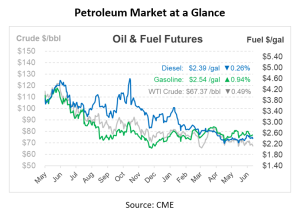
What is it – Lubricants
Chances are you’ve encountered the lubricants industry, even if you didn’t know it. From getting your oil changed every few months to topping off fluids during engine repairs, all vehicles need lubricants in some form to prevent damage. Today, we’re going to talk about an essential but often overlooked component in the petroleum industry: Lubricants.
What Are Lubricants?
In the most straightforward terms, a lubricant is an oily substance that reduces friction between surfaces in mutual contact. This friction reduction, also known as lubricity, decreases the heat generated when the surfaces move. However, lubricants aren’t just for reducing friction. They can also transmit forces, transport foreign particles, or even aid in heating or cooling the surfaces.
The petroleum industry relies heavily on lubricants, and most are derived from crude oil. Once crude oil is extracted from the earth, it is processed and divided into different products at refineries. These products range from gasoline and diesel fuel to, you guessed it, lubricating oils.

Types of Lubricants
Lubricants serve a crucial role across a multitude of sectors, including automotive and manufacturing. They find utility in a myriad of machine components, such as compressor oils, engine oils, piston oils, and gear oils. Additionally, they contribute significantly to the functioning of brake, hydraulic, and gearbox systems. Lubricants come in various types, each with its unique properties and applications.
Mineral Oil: Processed from crude oil, the properties and function of the mineral oil are determined by the degree of processing and refining.
Synthetic Oil: These lubricants are chemically engineered from petrochemicals to provide specific properties, such as a high viscosity index and lower tendency to form deposits.
Semi-synthetic Oil: A blend of mineral and synthetic oils, these lubricants are designed to reap the benefits of synthetic oil without the high cost.
Greases: Made by mixing oil (typically mineral oil) with thickeners like lithium-based soaps, they are used where a continuous supply of oil cannot be maintained, like open gears or bearings.
Additives: Substances added to lubricants to introduce new properties or enhance existing ones. They can improve the viscosity index, reduce friction, and include detergents, antioxidants, and corrosion inhibitors.
What are lubricants made of?
Lubricants are made up of base oils, which can account for between 70 to 95 percent of the final product. These base oils are commonly derived from either mineral or synthetic sources. Mineral base oils are refined from crude oil, which is a naturally occurring petroleum product. The refining process involves a series of steps to remove impurities and enhance desirable properties such as viscosity and thermal stability.
Synthetic base oils, on the other hand, are engineered in a laboratory using chemically modified petroleum components, although other raw materials can be used. They are designed to provide optimal performance under extreme conditions and offer advantages such as superior viscosity at high temperatures, improved thermal and oxidation stability, and lower volatility. Apart from base oils, lubricants also contain additives that impart specific properties to enhance their performance. These additives may reduce friction, prevent rust, improve viscosity, or serve numerous other functions to tailor a lubricant for a specific application.
Why Do We Need Lubricants?
The applications of lubricants in the petroleum industry are vast. They lubricate moving parts in machines and engines, are used in compressors, hydraulic systems, and even assist in drilling in petroleum production. They are essential for the proper operation and longevity of many types of equipment.
Proper lubrication facilitates uninterrupted machine operation, playing a crucial role in machine health and efficiency. Beyond friction reduction, lubricants can also provide:
Heat Control: The heat created by friction is absorbed and transferred by the flowing lubricant. Additionally, heat generation is reduced by the lubricant’s reduction of friction.
Contamination Control: Grease and other lubricants can create a seal between a machine’s internal components and the external environment, preventing contamination. Moreover, circulating lubrication within a machine can carry contaminants to a tank, sump, or filter, where they can be removed.
Protection Against Chemical Attack: Lubricants and their additives can coat machine components’ surfaces, protecting them from corrosion, such as rust.
Transfer of Energy: Hydraulic oil, due to its incompressible nature, is used to transfer energy within a hydraulic system.
Lubricants may not always be the first thing that comes to mind when thinking about the petroleum industry, but they play a vital role in ensuring the efficiency and longevity of machines and equipment. The right lubricant can make all the difference between smooth operation and unwanted downtime.
Mansfield’s subsidiary Mansfield Service Partners specializes in distributing high-quality lubricants and fluids that have a proven track record of enhancing equipment reliability and performance. As a Shell Prestige Distributor, we offer not only the industry’s leading brands but also our own proprietary line of products. Contact us today to explore how we can empower your business and help you achieve your goals.

This article is part of Daily Market News & Insights
Tagged:
MARKET CONDITION REPORT - DISCLAIMER
The information contained herein is derived from sources believed to be reliable; however, this information is not guaranteed as to its accuracy or completeness. Furthermore, no responsibility is assumed for use of this material and no express or implied warranties or guarantees are made. This material and any view or comment expressed herein are provided for informational purposes only and should not be construed in any way as an inducement or recommendation to buy or sell products, commodity futures or options contracts.





